Search
Did you mean: Caravel?
Search Results

Article
Oheka Castle
Oheka Castle, built by the industrialist Otto Herman Kahn (l. 1867-1934), is one of the best-known luxury hotels of Long Island, NY, USA today. In its time as a private residence, it was the site of the kind of lavish parties which inspired...
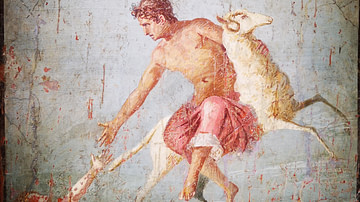
Image Gallery
20 Frescoes from Pompeii
In this gallery, we present 20 of the most striking frescoes found in the ancient Roman city of Pompeii in Italy. These frescoes were once buried under a thick carpet of volcanic ash from the Vesuvius eruption of 79 CE. Year after year, archaeologists...
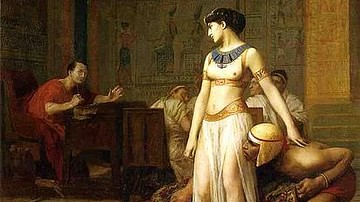
Image
Cleopatra and Caesar
Cleopatra Before Caesar by Jean-Léon Gérôme, oil on canvas, 1866. Cleopatra confronts Gaius Julius Caesar after emerging from a roll of carpet. The Egyptian Queen had been driven from the palace in Alexandria by her brother/husband Ptolemy...
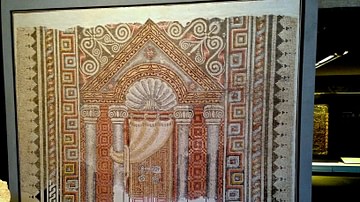
Image
Mosaic of Temple Facade with Torah Ark
Carpet mosaic depicting Temple facade with Torah Ark dating to the 4th century CE. Excavated at Khirbet es-Samarah.
Currently housed in the Israel Museum, Jerusalem.
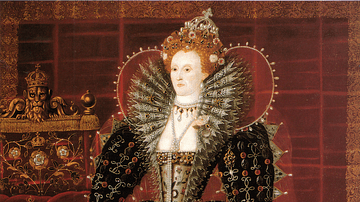
Image
Elizabeth I Hardwick Hall Portrait
A c. 1598 CE portrait of Elizabeth I of England (r. 1558-1603 CE). Attributed to Nicholas Hilliard (1547-1619) or his former apprentice Rowland Lockey (c.1566-1616). The queen was into her sixties at the time of this portrait and, though...
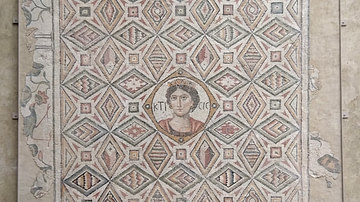
Image
Personification of Ktisis from Antioch
Late antique mosaic floor depicting Ktisis (Gr. ΚΤΙΣΙΣ), personification of 'Foundation', originally from a villa at Antioch, 5th century. Worcester Art Museum. The floor was found during the archaeological campaigns at ancient Antioch...
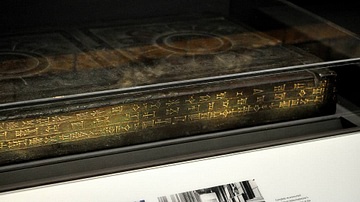
Image
A bronze door-slab from Ezida Temple, Borsippa
This door-slab came from the lower part of a flight of steps in the Temple of Ezida in Borsippa, part of the building works of the Babylonian king Nebuchadnezzar II (604-562 BCE). The recess is for a door-post. The pattern represents a carpet...
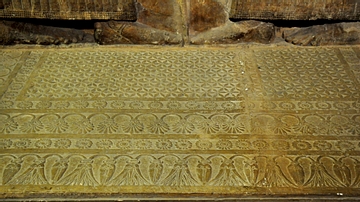
Image
Door-Sill from Nineveh
This gypsum door-sill was carved as a carpet; there are rosette and lotus flower designs. Neo-Assyrian Period, reign of Ashurbanipal II, 645-635 BCE. From room I, door b or d, the North Palace at Nineveh, Northern Mesopotamia, modern-day...
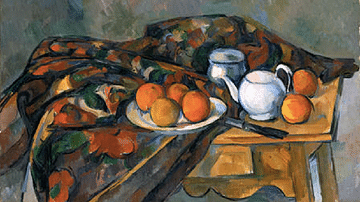
Image
Still Life with a Teapot by Cézanne
A c. 1902-6 still life in oils, Still Life with a Teapot, by Paul Cézanne (1839-1906), the French post-impressionist artist. Cézanne frequently adds odd objects in a particular arrangement to accompany fruit or flowers. Here he uses a carpet...